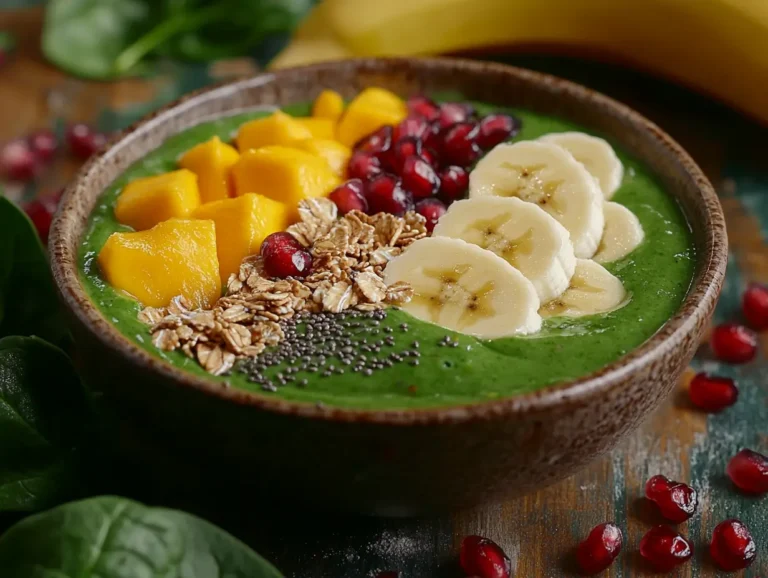Is Sourdough Or Brioche Better For French Toast? Expert Tips
Table of Contents
French toast is a universally loved breakfast treat, but the type of bread you use can make or break your recipe. When it comes to choosing the best bread for French toast, the debate often boils down to two contenders: sourdough and brioche. Both have their champions, with unique textures and flavors that cater to different palates. In this article, we’ll dive into what makes each bread stand out, compare their strengths, and provide expert tips to help you decide which one is better for your next French toast adventure.
What Makes a Bread Ideal for French Toast?
Creating the perfect French toast starts with understanding the qualities of an ideal bread. Not all breads are created equal, and the choice of bread significantly impacts the texture, flavor, and overall enjoyment of this dish.
The Essential Qualities of French Toast Bread
A great French toast bread needs to tick a few key boxes:
- Absorbency: The bread should soak up the egg mixture without becoming soggy. A sturdy crumb ensures the bread holds its shape while absorbing the custard-like batter.
- Texture: A balance between softness and firmness is essential. The bread should be tender enough to melt in your mouth yet sturdy enough to withstand frying.
- Flavor Compatibility: The bread’s inherent flavor should complement the sweet or savory components of French toast. Rich, buttery notes work well for sweet French toast, while a tangy profile pairs beautifully with savory options.
Comparing Egg-Based and Non-Egg-Based Breads
French toast bread typically falls into two categories:
- Egg-Enriched Breads: These breads, like brioche and challah, are made with high butter and egg content, giving them a soft, plush crumb. Their richness naturally complements the creamy custard, making them a popular choice for classic recipes.
- Non-Enriched Breads: Sourdough is a prime example of this category. Its denser structure and slightly sour tang create an intriguing contrast to the sweetness of traditional French toast recipes.
By understanding these core qualities, you’ll see why both brioche and sourdough have become household favorites in the world of French toast. In the next sections, we’ll dive deeper into each bread to explore their individual characteristics and uses.
Exploring Brioche as a French Toast Base
Brioche – The Quintessential French Toast Bread
When it comes to indulgence, brioche is the first bread that comes to mind for French toast enthusiasts. This buttery, egg-enriched bread has a soft, pillowy texture that absorbs the custard mixture perfectly, resulting in a rich, creamy bite every time. Its slightly sweet flavor harmonizes well with toppings like syrup, powdered sugar, and fresh fruits.
Notably, its sponge-like quality ensures the egg mixture is evenly distributed, providing a custard-like center. It’s no wonder that brioche is often considered the gold standard for French toast recipes, especially in traditional French cooking.
Popular Brioche-Based French Toast Recipes
Brioche opens up a world of possibilities when it comes to French toast recipes. From classics to gourmet options, here are a few ideas:
- Classic Brioche French Toast: Simplicity at its best with a sprinkle of cinnamon and a drizzle of maple syrup.
- Stuffed Brioche French Toast: Imagine a creamy filling of mascarpone or cream cheese paired with fresh berries.
- Decadent Toppings: Pair brioche with caramelized bananas, nuts, or even a rich chocolate ganache for a dessert-like treat.
Looking for recipe inspiration? Check out this detailed guide on easy-to-digest bread recipes. for tips that can be adapted to brioche too.
Pros and Cons of Using Brioche
Let’s weigh the benefits and drawbacks:
- Pros:
- Its rich flavor and soft texture are unparalleled.
- Soaks custard well without falling apart.
- Great for both sweet and savory toppings.
- Cons:
- More expensive than regular bread.
- Its richness can make it feel heavy for some.
Delving Into Sourdough for French Toast
Why Sourdough is Gaining Popularity
While brioche is known for its sweetness, sourdough brings something unique to the table: a tangy flavor. This tanginess contrasts beautifully with the sweet elements of French toast, creating a complex and delightful flavor profile. Moreover, sourdough’s chewy texture and sturdy crumb make it ideal for soaking up the egg mixture without becoming mushy.
Sourdough French toast often appeals to those who prefer a less sweet and slightly rustic flavor. Its natural fermentation process not only adds depth but also enhances digestibility, making it a healthier option for some.
Sourdough French Toast: Recipe Variations
Sourdough is incredibly versatile in French toast recipes, whether you’re aiming for sweet or savory dishes. Popular ideas include:
- Sweet Sourdough French Toast: Add a touch of cinnamon and vanilla, then top with fresh berries and honey.
- Savory Twist: Pair with avocado slices, poached eggs, or smoked salmon for a brunch-ready masterpiece.
- French Toast Casserole: Bake chunks of sourdough with a custard mixture, brown sugar, and pecans for a crowd-pleasing dish.
For an in-depth recipe, explore this Sourdough French Toast Classic Twist to try your hand at this variation.
Pros and Cons of Using Sourdough
Here’s a balanced view of sourdough for French toast:
- Pros:
- Adds a unique tang that complements sweet and savory toppings.
- Dense texture holds up well during cooking.
- A slightly healthier option due to natural fermentation.
- Cons:
- Its crust can be challenging to manage in skillet recipes.
- Flavor may not appeal to those preferring sweeter bread options.
Sourdough vs. Brioche – A Head-to-Head Comparison
When it comes to French toast, the question Is sourdough or brioche better for French toast often sparks heated debates among food lovers. Both breads bring unique qualities to the plate, making them equally viable but distinctly different options. Let’s break it down.
Texture and Flavor Profiles
Brioche is celebrated for its soft, buttery texture that soaks up custard effortlessly. This bread offers a sweetness that pairs wonderfully with fruits, syrups, and whipped cream. On the other hand, sourdough has a chewier crumb and a tangy flavor that contrasts beautifully with sweet toppings, while also holding up well under custard without becoming mushy.
For those who enjoy richness, brioche might feel like a warm hug in bread form. However, if you prefer a more balanced flavor that cuts through the sweetness, sourdough delivers with its subtle tang.
Suitability for Various French Toast Styles
Different recipes call for different bread qualities. Here’s how brioche and sourdough stack up:
- Casserole Recipes: Brioche is ideal for casseroles thanks to its soft structure that melds into a creamy base.
- Classic Skillet French Toast: Sourdough’s sturdy crust excels here, providing crisp edges and a chewy center.
- Stuffed French Toast: Brioche is better suited due to its pliability and rich flavor.
Not sure which recipe to try first? Check out French Toast with Sourdough Bread for a classic approach using sourdough.
Cost, Availability, and Storage Considerations
Brioche tends to be pricier than sourdough, reflecting its enriched ingredients like butter and eggs. It’s also more delicate and best used fresh. Meanwhile, sourdough is often more affordable and has a longer shelf life, thanks to its natural fermentation process.
In conclusion, choosing between sourdough and brioche often depends on your recipe, flavor preference, and budget. Both breads shine in different ways, making it less about which is better and more about what suits your tastes. Expert Opinions on the Debate
To settle the question, Is sourdough or brioche better for French toast, we turned to experts. Chefs, bakers, and home cooks all have unique perspectives based on their experiences.
Insights from Chefs and Home Cooks
Many professional chefs lean toward brioche for its luxurious texture and flavor. They often describe it as the quintessential bread for French toast, especially for high-end brunch menus. Home cooks, however, frequently opt for sourdough, citing its availability, versatility, and the added complexity it brings to sweet dishes.
For example, sourdough’s tangy notes can elevate classic recipes, giving them a slightly savory twist. Brioche, on the other hand, shines in recipes where richness is key, such as stuffed or dessert-style French toast.
Insights from Baking Experts
Bread experts point out that the method of baking plays a critical role in French toast. The airy crumb of brioche ensures it absorbs the custard evenly, while sourdough’s natural density prevents it from becoming overly soggy. Additionally, the fermentation in sourdough adds subtle depth that brioche lacks.
If you’re looking for more recipe ideas or tips on choosing the best bread for French toast, explore our full recipe archive for inspiration. Try combining techniques from Sourdough French Toast – A Classic Twist to master both styles.
Recipes to Try for Both Options
If you’re still torn between sourdough and brioche, the best way to decide is by trying them both. Each bread lends itself to unique recipes that showcase its strengths. Below are two crowd-pleasing recipes tailored to each option.
Classic Brioche French Toast Recipe

This recipe highlights brioche’s luxurious texture and flavor, making it a go-to for brunch gatherings or lazy Sunday mornings.
Ingredients:
- 6 thick slices of brioche
- 3 large eggs
- 1 cup whole milk
- 1 tablespoon sugar
- 1 teaspoon vanilla extract
- 1/2 teaspoon cinnamon (optional)
- Butter for frying
Instructions:
- Whisk the eggs, milk, sugar, vanilla, and cinnamon in a bowl.
- Heat a skillet over medium heat and melt a small amount of butter.
- Dip each slice of brioche in the egg mixture, ensuring even coating.
- Cook each side until golden brown, about 2–3 minutes per side.
- Serve with maple syrup, fresh fruit, or powdered sugar.
This recipe embodies the richness of brioche, making it perfect for anyone wondering, Is sourdough or brioche better for French toast?
Sourdough French Toast Casserole Recipe

For those who enjoy bold flavors and convenience, this baked sourdough casserole is a winner. The tangy bread pairs beautifully with a sweet, buttery topping.
Ingredients:
- 1 loaf of sourdough, cubed
- 6 large eggs
- 2 cups milk
- 1/4 cup heavy cream
- 1/4 cup brown sugar
- 1 teaspoon vanilla extract
- 1/2 teaspoon nutmeg
Topping:
- 1/2 cup brown sugar
- 1/2 cup unsalted butter, melted
- 1 teaspoon cinnamon
Instructions:
- Arrange sourdough cubes in a greased baking dish.
- In a bowl, whisk together the eggs, milk, cream, sugar, vanilla, and nutmeg. Pour over the bread.
- Cover and refrigerate for at least 4 hours or overnight.
- Preheat oven to 375°F (190°C). Combine topping ingredients and drizzle over the bread.
- Bake for 40–45 minutes until golden and set.
This recipe lets you enjoy sourdough’s tangy goodness in a warm, comforting dish.
FAQs
When choosing between sourdough and brioche for French toast, questions often arise about flavor, texture, and versatility. Here are answers to some of the most common ones.
Can sourdough French toast be made sweeter?
Absolutely! Adding a touch of sugar, honey, or maple syrup to the custard mix can offset sourdough’s tangy flavor. Sweet toppings like caramelized bananas or whipped cream also work wonders.
Does brioche make French toast too heavy?
While brioche is rich, its airy texture prevents it from feeling overly dense. Pair it with fresh fruit to balance the richness.
What other breads can be used for French toast?
Aside from sourdough and brioche, challah, baguettes, and Texas toast are excellent choices. Each offers unique textures and flavors.
Which toppings complement sourdough and brioche French toast?
For brioche, sweet toppings like berry compotes, syrups, and powdered sugar work best. Sourdough pairs well with savory options like avocado or smoked salmon and sweet choices like honey or spiced apples.
Health and Nutritional Differences Between Sourdough and Brioche
The debate over Is sourdough or brioche better for French toast extends beyond flavor and texture—it also involves their health benefits. Each bread has unique nutritional qualities that may influence your choice.
Nutritional Profile of Brioche
Brioche is a rich, indulgent bread, thanks to its high butter and egg content. These ingredients make it higher in fat and calories compared to other bread types. However, its richness means it’s naturally flavorful, so you might not need to add as much butter or syrup to your French toast.
Key points about brioche:
- Higher in fat and sugar due to its enriched dough.
- Contains a moderate amount of protein from eggs.
- Offers a luxurious treat but may not be the healthiest daily option.
Nutritional Profile of Sourdough
Sourdough is celebrated for its health benefits. Its natural fermentation process helps break down gluten, making it easier to digest for many people. The tangy flavor also means you can pair it with less sweet toppings, reducing overall sugar intake.
Key points about sourdough:
- Lower in fat and sugar compared to brioche.
- Contains beneficial bacteria from fermentation, which may aid digestion.
- Its robust structure allows for creative savory toppings, making it versatile.
When considering health and nutrition, sourdough is often the more wholesome choice. However, brioche’s occasional indulgence can be just as rewarding in moderation.
Conclusion: Sourdough vs. Brioche for French Toast – Which Wins?
When it comes to Is sourdough or brioche better for French toast, the answer lies in your taste and occasion. Brioche offers rich indulgence with its buttery sweetness, perfect for classic recipes. Sourdough, with its tangy flavor and sturdy texture, brings versatility and a rustic charm to the table. Whether you’re craving luxurious or hearty French toast, both breads shine in their own unique way. Why not try both and discover your favorite?







